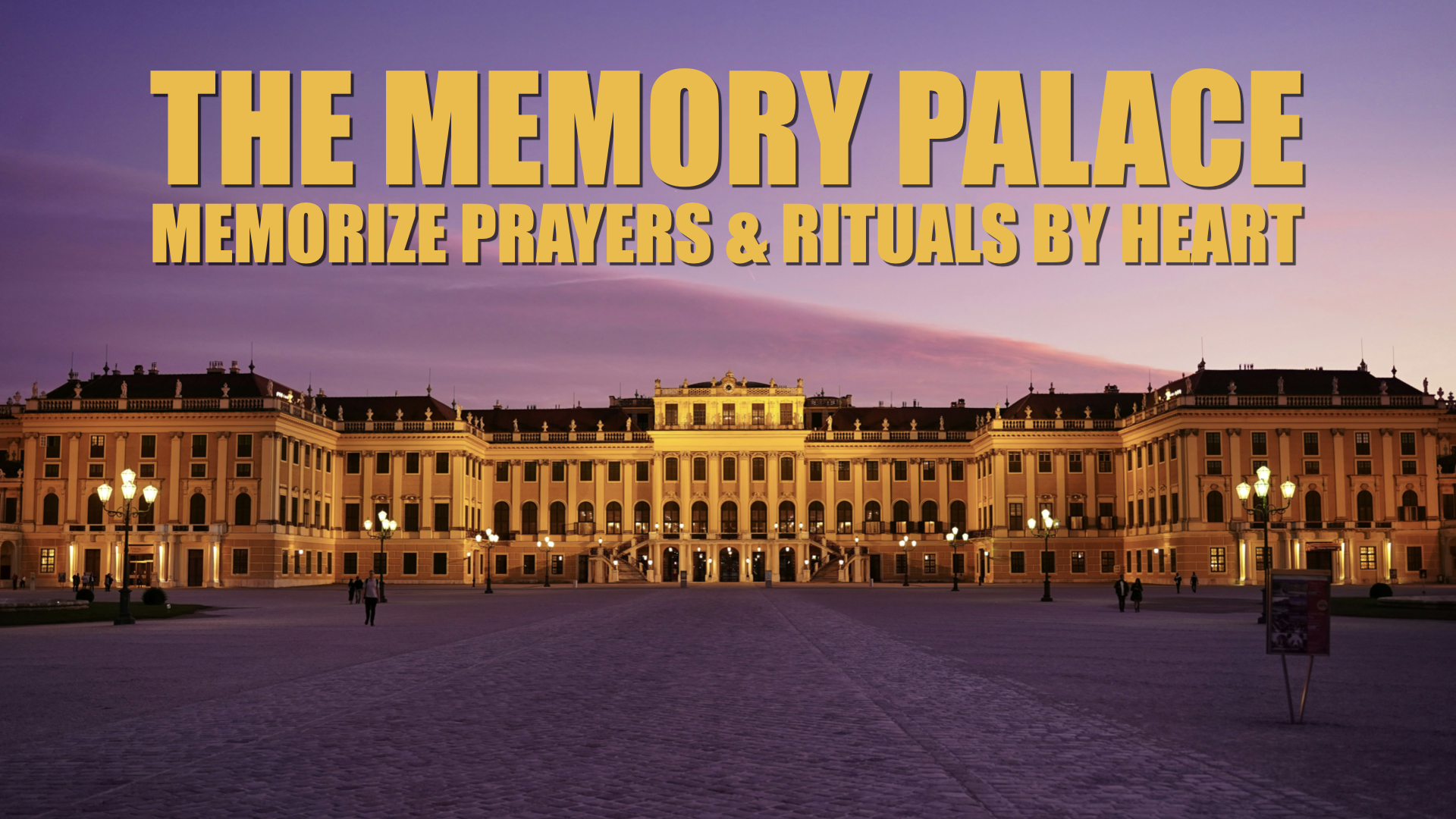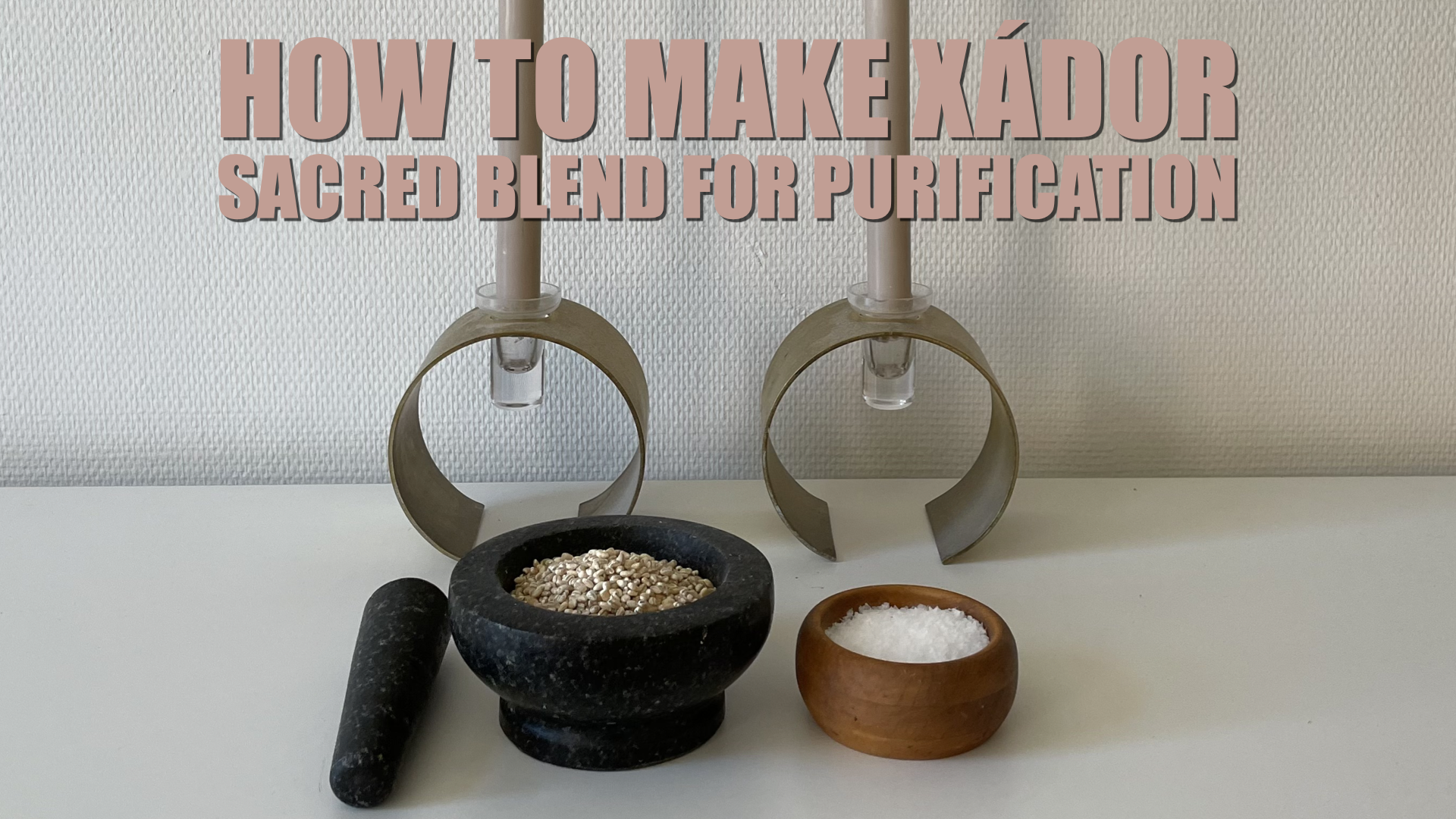Have you ever wished you could remember long prayers by heart? Or recall every step of a ritual, smoothly and confidently? Then this one’s for you. Today you’ll learn a very simple and powerful technique that can make that possible – facilitating spiritual growth and making you a better spiritual leader.
What if you could step into a ceremony knowing every word, every step, every blessing — not from notes, but from within? What if remembering long prayers wasn’t a struggle but second nature? One of the challenges that both new and experienced pagans often mention as the main thing holding them back in their spiritual growth and making it hard and awkward to perform and lead ritual, ceremonies and even domestic worship, is that they simply can’t remember the words and steps.
It doesn’t feel very solemn and genuine if you don’t know what to do next and can’t recall the praise, hymns or prayers that the Divine kindreds deserve. It’s hard to keep the contact and stay mindful if you have to check your notes all the time. But you’re not alone.
In just a few generations, our memories have changed dramatically — not because our brains have evolved, but because our environment has. With the rise of digital technology, we’ve outsourced much of our memory. We scroll instead of recall, search instead of store — and our minds have adapted to rely more on external tools than internal memory. The change is cultural, not biological — and it’s happened faster than our brains can keep up.
Our brains were shaped ’in the cave’ and ’out on the vast steppes’ — not in classrooms or books. Historically, what we’ve needed the most is to remember what we saw; where the water was, which plants were safe to eat, where to find shelter, what animals to avoid etc. We got really good at remembering places, faces, objects, visual scenes — because our survival depended on it. But fast forward to today, and in just a tiny fraction of human history, we’re suddenly expected to memorize abstract, theoretical information — like letters, texts, facts and in this case even prayers, rituals, formulas. Our ’caveman brains’ weren’t built for that. At least not the way we’re supposed to recall today.
Long before books, screens, and search engines, people passed down entire worlds — stories, culture, laws, prayers, rituals — through memory alone. The ancient Indo-European peoples, like the early Vedic rishis, the bards and skalds of ancient Europe, lived in oral cultures where memorizing was not a rare skill — it was a way of life. Sacred texts were recited with perfect precision for centuries before they were ever written down. In Homeric Greece, epic poems thousands of lines long were memorized and performed by heart. Our ancestors had no smartphones, no paper — just trained memory, rhythm, and visualization. They had to remember— and so they did.
In our digital society, we’ve outsourced most of that ability. We scroll, we copy, we Google — and we’ve forgotten that deep memory is something humans were once extraordinarily good at.
Today, we’re unlocking the secret of how your ’caveman brain’ — the same one designed to remember where to find water or spot danger in the wild — can be trained to memorize the most complex spiritual texts, step-by-step rituals, or sacred prayers. You already have a superpower — hidden in your brain — that can help you remember anything. Not just your grocery list or your friend’s birthday… but full prayers, rituals, speeches, even entire books. Those memory skills aren’t lost — they’re just asleep. So we just need to turn intellectual stuff, words, facts, sequences, steps, digits etc back into the visual, spatial, emotional story-based information our brains are naturally great at remembering. And do it in a structured way.
Introducing the Memory Palace! That’s what this technique is often called nowadays. But it’s an ancient technique – used by poets, orators, senators, memory champions etc for millennia. It was most likely invented by the ancient Greek rhetoricians. The famous orator Simonides of Ceos utilized it already around the 5th century BCE. The more ancient name of the Memory Palace technique is the Method of Loci.
The method of loci is a mnemonic strategy and device for memory enhancement, which uses visualizations of familiar spatial environments in order to enhance the recall of information. That’s why it’s also perfect for learning rituals, prayers etc by heart.
🧠 It for example connects words to places — and places are easier to remember.
Imagine walking through your childhood home in your mind. You know exactly where everything is — your front door, your kitchen, your bedroom. The Memory Palace uses this strength. You place parts of your prayer or ritual along a route in your mind. Each verse, line, or movement becomes tied to a familiar place, so you no longer have to “guess” what comes next — you just mentally walk from room to room.
🎭 It turns abstract words into vivid, memorable images.
Sacred texts can sometimes feel like long strings of similar-sounding phrases. But when you visualize each one — a dove flying in your hallway for peace, a shining candle on your desk for light — your brain holds onto them more easily. The sillier, more humorous, emotional, or more symbolic the image, the better it sticks.
🕊️ It mirrors the structure of rituals themselves.
Rituals often follow a fixed order — steps, movements, prayers, pauses. That makes them a natural fit for this technique, which relies on sequencing. You can assign each stage of the ritual to a spot in your Memory Palace — like a procession through a temple in your mind.
🔁 It makes review fast and engaging.
Instead of reading through a long text every time you want to practice, you can just close your eyes and take a walk through your Memory Palace. It’s like flipping through a slideshow of images — each one triggering the next line or action.
So the Memory Palace doesn’t just help you remember — it helps you embody and internalize what you’re learning. And that makes it perfect for rituals, prayers, and sacred texts — not just to recite them, but to truly carry them with you. Let’s go through it together!
1: First choose your Memory Palace, your location
Pick a place you know very well—like your (childhood) home, school, office, or a route you walk often. Familiar places are easy for your brain to visualize in detail, so the clearer it is in your mind, the better.
2: Now Define a Route Through the Palace
Mentally walk a specific path through your chosen location. It’s of course intelligent to start for example outside the front door of your childhood home, or at the very beginning of that forest path. This route becomes the structure you’ll use to “store” memories. Make sure to choose at least 5–10 distinct spots or “stations” along the route (like your sofa, kitchen table, stairs, or bathroom sink).
3: Turn What You Want to Remember into Mental Images
Convert the information into vivid, silly, or exaggerated images. Our brains remember unusual & visual things more easily than plain facts or numbers. For example: To remember the name “Baker,” imagine a giant baker with a fluffy hat baking cookies on your kitchen counter.
4: Place the Images in Your Memory Palace
So mentally “put” each image at a specific location along your route. This ties your memory to a physical location, which strengthens recall. For example: Imagine the cookie-baking baker in your kitchen; next, maybe you need to remember the number 12, so you see 12 dancing penguins on your couch, or you need to remember a car, so you imagine a car coming crashing out through the bathroom door.
5: Now walk through your palace to recall
To retrieve the information, mentally walk through your memory palace & observe the images at each location. The spatial path triggers memory retrieval naturally. Take this walk over and over until you remember it all.
The more humor, silliness, emotion and movement you use, the more memorable the images become.
These are the basics of this memory technique. Try something simple to begin with, just to get a feel for the technique – try for example to remember great inventions from each decade of the 1800’s and 1900’s, by placing them along a route in your home. A battery (from 1800) lying on the door mat, a train or locomotive from the 1810’s crashing though your door, a photography from the 1820’s being developed on the carpet just inside your door, a telegraph and its wires from the 1830’s leaping (and buzzing) through the clothes hangers, a golden safety pin from the 1840’s fastened around the bathroom door handle etc. Use ten or twenty such inventions and practice the basics.
Again, these were the basics. To modify, extend and specialize this technique for long hymns, prayers or rituals, there are some things we can do.
Break the text or ritual into logical sections, verses or chunks. For example divide what you’re trying to memorize into manageable parts, like one line or paragraph per room, one verse or mantra per location, one phrase per item etc. This is crucial: you’re not trying to remember the whole thing at once, just piece by piece.
Create strong, symbolic visuals that resonate with the text’s spiritual message. For each line or idea, create a visual image — the more vivid, strange, or emotionally charged, the better. For example: If the line is “Let the bow be strong and well-strung. Let Indra, wielder of the thunderbolt aid us with his bow.”, then imagine a bow and quiver glowing on your kitchen table, and ’hear’ the sound of the string. You’re not just remembering words — you’re turning them into mental images. And the stranger, funnier images the easier to recall.
Place the images strategically along the route. Walk through your mental space and place each image in order, anchoring each part of the prayer etc to a physical spot. For example, the opening line is placed in the hallway, the next line in the kitchen, or whatever of your rooms comes next. And so on. This gives the prayer a logical, physical structure in your mind.
You can also create separate quote unquote palaces for different texts or rituals.
Add rhythm or melody if the prayer is chanted — this reinforces memory even more. It’s also clever to add different rhythms or melodies to different parts of the piece, or to different works etc.
Revisit the palace daily to strengthen the pathway.
I really hope this helps! You’ll also find this guide in text on the Hamingja platform.

12 Powerful Medicinal Plants You Need to Harvest This May
As nature bursts back into life, May offers a wealth of medicinal plants ready to be harvested. Spring is one


